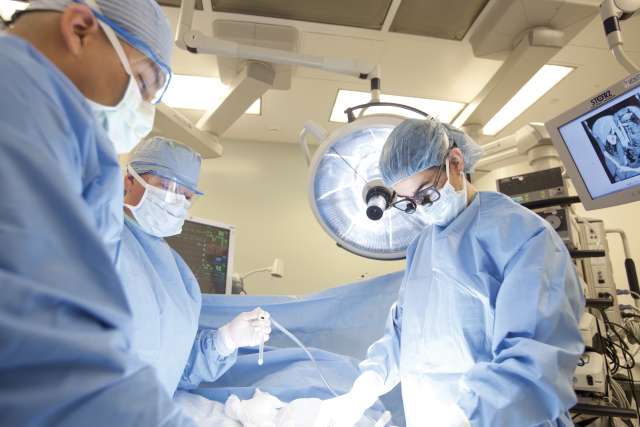U.S. kidney transplant survival rates continue to improve
Long-term survival rates of kidney transplant patients in the U.S. have increased over the last three decades, but there are opportunities to further improve these outcomes, according to a review article published in The New England Journal of Medicine.
For many patients with end-stage kidney disease, transplants are a better option than a lifetime of dialysis. But some kidney transplants will fail eventually. Prolonging the survival time of kidney grafts not only improves patient lifespan, boosts quality of life and reduces health care costs, but also makes more kidneys available for the approximately 90,000 people who are waiting for a transplant in the U.S.
“There has been a gratifying improvement in kidney transplant survival from 1996 to the current era,” said senior author Dr. Gabriel Danovitch, professor of medicine, division of nephrology at the David Geffen School of Medicine at UCLA and medical director of the UCLA Kidney and Pancreas Transplant Program. “These improvements have occurred despite increases in obesity, diabetes and other conditions in both patients and potential organ donors.”
Dr. Ajay Israni, transplant nephrologist at Hennepin Healthcare and professor of medicine at the University of Minnesota, and Dr. Sundaram Hariharan, professor of medicine and surgery and senior transplant nephrologist at the University of Pittsburgh, co-authored the study and contributed equally to the review.
The article describes these positive trends in the U.S. and suggests opportunities to further enhance kidney transplant survival.
Kidney transplantation involves transplanting a healthy kidney from a deceased or living donor. Living donors are highly motivated and healthy people who are carefully screened to ensure the safety and success of the procedure. To help prevent their bodies from rejecting the new organ, transplant patients must take immunosuppressive drugs for the rest of their lives.
The study found that long-term survival of kidney grafts has increased over time. For example, the five-year survival rate of kidneys from deceased donors increased from 66.2% in 1996–1999 to 78.2% in 2012–2015. Similarly, survival of those from living donors increased from 79.5% to 88.1% in the same period.
“We have learned a lot through basic research and by the clinical care of kidney transplant patients,” said Danovitch. “Newer tissue typing and tissue matching platforms, changes in organ allocation systems, living donor paired exchanges, transplant surgical techniques, immunosuppressive medications, anti-viral medications, refined diagnostic methods of kidney rejection by biopsy, aggressive post-transplant surveillance and overall post-transplant medical management, have all contributed to better survival rates.”
The researchers emphasize that COVID-19 is a serious threat to kidney transplant recipients, for whom mortality rates from the disease are high. COVID-19 vaccines reduce the rate and severity of infections, but they are less effective in transplant patients compared with the general population. A third, or “booster,” dose of the vaccine appears to be beneficial for transplant recipients.
“Kidney transplant patients should also follow Centers for Disease Control and Prevention guidelines on social distancing and masking,” Danovitch said.
Despite advances in kidney transplant survival, the U.S. rates fall short of those in some other developed nations. This is likely because, until recently, Medicare insurance covered immunosuppressant drugs for just three years after transplantation.
In December 2020, after intense lobbying by the transplant and nephrology community, a U.S. law was passed that will eventually provide lifetime coverage of these essential medications.
“The passing of this law is a major advance for kidney transplant patients, and we anticipate further improvements in long-term kidney transplant survival over the next decade,” Danovitch said.
The article outlines other opportunities to further enhance kidney graft survival, such as early referral of patients for transplants, kidney exchange programs, better diagnostic tools to identify early acute rejection, innovative therapies for both T-cell- and antibody-mediated rejection, adoptive T-cell therapy for certain post-transplant viral infections and optimization of immunosuppressive medications.
Better education of patients about the importance of adhering to therapy is also important for improving transplant survival. According to Danovitch, a silver lining of the COVID-19 pandemic has been wider adoption of telemedicine, expanding patient access to post-transplant care.



